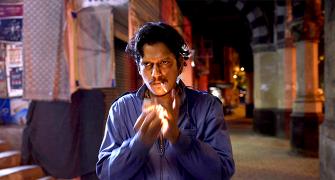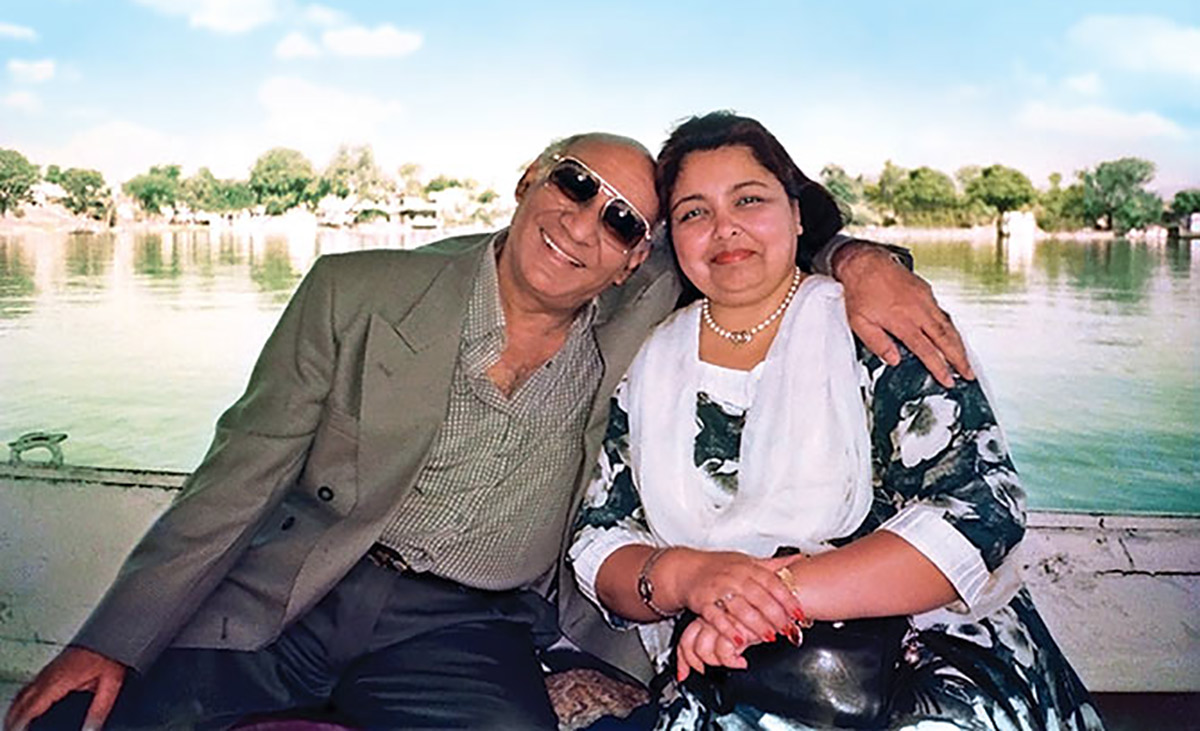'If we keep losing such institutions, we will soon become a city and culture of short-term memory.'
'Nothing to remind us of the years gone by and eventually with nothing to remember.'
Ranjita Ganesan reports.
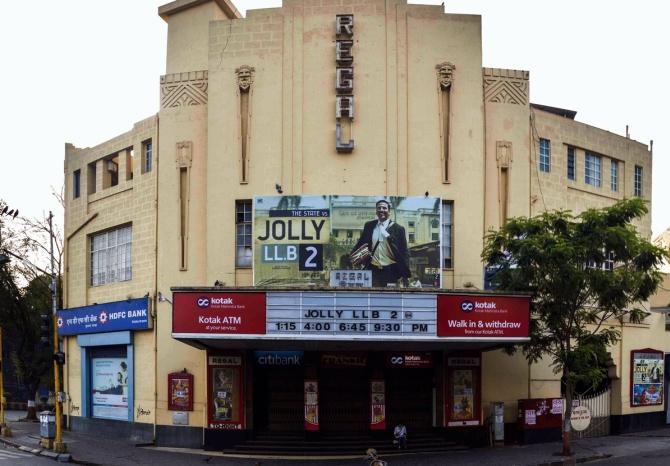
It is nearing six in the evening, but the clock in the office of Edward Talkies in Kalbadevi remains pointed at hour three, as if challenging the rapid progress in the world outside.
The entrance of modern multiplexes two decades ago had hit business at single-screen theatres across the country, including at this 19th century cinema.
After a bit of refurbishment five years ago, there were plans to make it an alternative venue for culture and the arts.
Visual artists from London and documentary film-makers from Germany, among others, had used the space, but that enthusiasm did not sustain.
A Kannada action film dubbed in Hindi is presently playing for less than a dozen viewers, mainly local workers who buy the Rs 30 ticket so they can take a break or spend time with a lover.
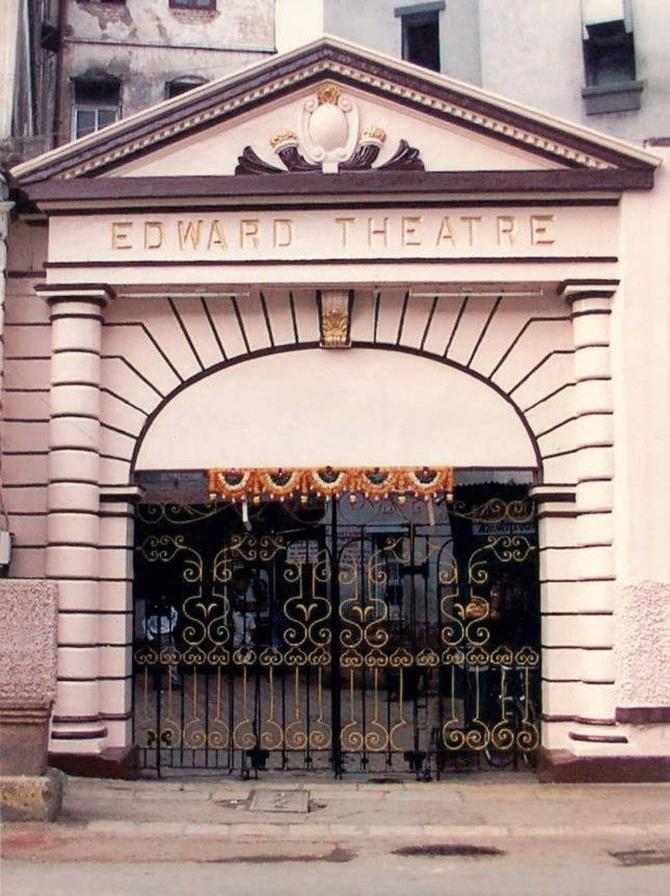
"Where is the future of single screens?" Sanjay, who helps with upkeep at the theatre, asks somewhat philosophically.
He grew up in the neighbourhood and claims he has watched a film from each of the 509 wooden seats spread over three levels here.
The space had started as a playhouse and in its heyday as a cinema place, it had as many as 1,500 gathering to watch the 1970s mythological hit Jai Santoshi Ma.
Fred Poonawala, the Parsi owner whose relatives founded the theatre, pays for the loss-making business from his own pocket, unwilling to let go of the five people who still work for him.
Occasionally, if crews show interest in shooting films or commercials there, it covers the electricity bills.
It is all quite emblematic of the fate of single screens in the city for which the curtain may fall at any time.
Last November, Colaba's Regal Cinema announced that shutdown was imminent as it was bearing massive losses of Rs 1 crore (Rs 10 million) a year.
Only weeks earlier, its 85-year-old interiors had been packed with attendees of the Mumbai Film Festival, drinking affordable coffee and tweeting one-line reviews for the films of Hong Sang-soo or Ali Abbasi.
Festival regulars have always known Regal -- as also Liberty Cinema -- to be a venue where you are assured a spot, whereas other locations can sell out within hours.
This is because the vintage structures of south Mumbai can house over 1,000 people each, while a multiplex hall holds 300 to 400 each.
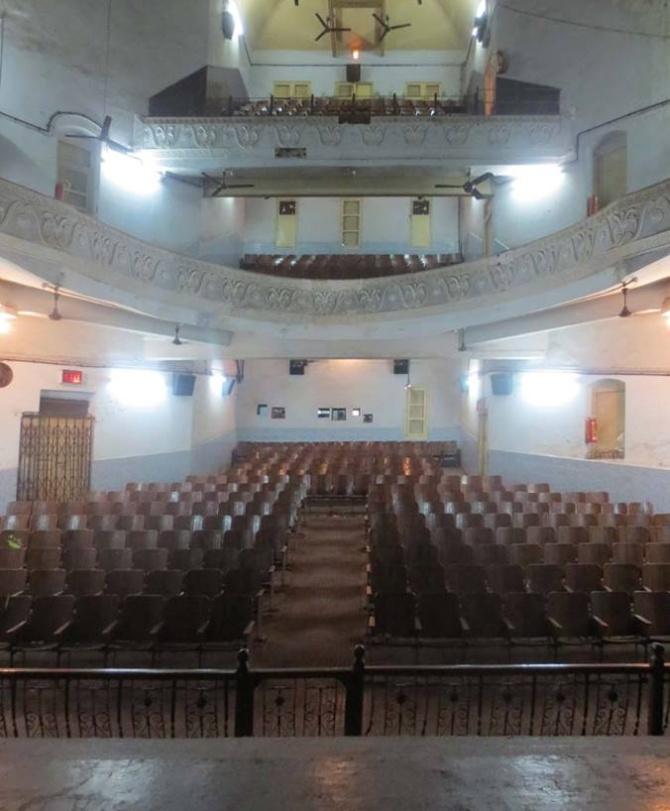
Smriti Kiran, creative director of the Mumbai Academy of the Moving Image, describes these as "spaces with collective memories that are a haven to slip into in a world where everything is ephemeral".
They are unsullied by distractions like shopping, eating, spas and salons. "You come here, watch a film and go home. The experience is pure."
Indeed, single screens are beloved for being rich with stories and histories, and their few persisting patrons want them to thrive rather than be empty landmarks.
The firm that runs Regal also owned the neoclassical-inspired Capitol Cinema in the Chhatrapati Shivaji Terminus area, which had succumbed to market pressures in 2011.
In 2014, the New Empire cinema, another of the great Art Deco cinemas, announced 'permanent and irrevocable closure'.
Across India, some 6,000 single screens remain where there were once 10,000.
In Mumbai alone, the number of single-screen cinemas has nearly halved from 130 to 70 -- their profits sapped by a mix of flashy competitors, piracy and an erstwhile entertainment tax of 45 per cent.
Added to this is the new threat from online streaming services. An old municipal rule had guided that theatres which were built on land reserved for the purpose of cinema can scale down the film screening business but cannot change it.
Of late, to people the halls and remind the city that single screens still exist, a small number of such cinemas had taken to hosting alternative events like talks and exhibitions.
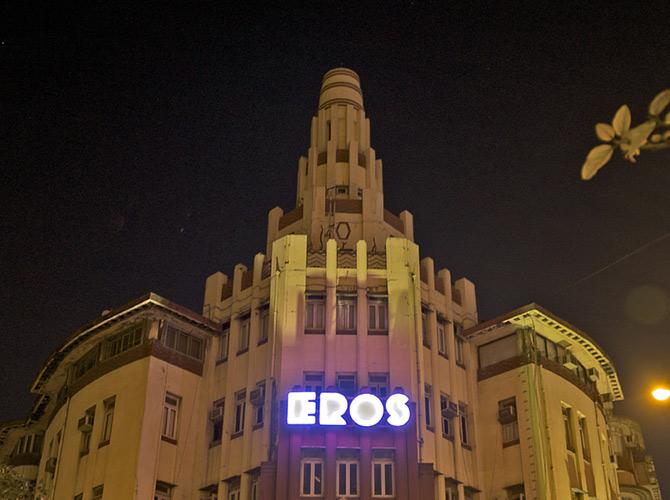
There are, however, some cases of turnaround. Metro in Dhobi Talao went the multiplex way more than a decade ago, after a period of closure.
Its Art Deco façade with the scarlet-and-silver sign were retained -- there is even a beautiful old-style wood and metal elevator in its office premises -- but inside it looks like any upscale cinema.
A classic projector is on display, suggesting its 80-year-old legacy, which saw ownership pass from the founding Hollywood studio, MGM, to the Gupta family that has interests in real estate.
The likes of Gregory Peck and Raj Kapoor attended red carpet events here.
Metro Realty will likely help rejuvenate Eros, a fellow heritage theatre in Churchgate that shut down in 2017 after ticket sales failed to pick up.
In its new innings, the upper level of Eros is proposed to remain a cinema, while the lower ones would be turned into a department store.
To expand their footprint in recent years, companies including PVR and Gold Cinemas added a few single screens across India to their kitty.
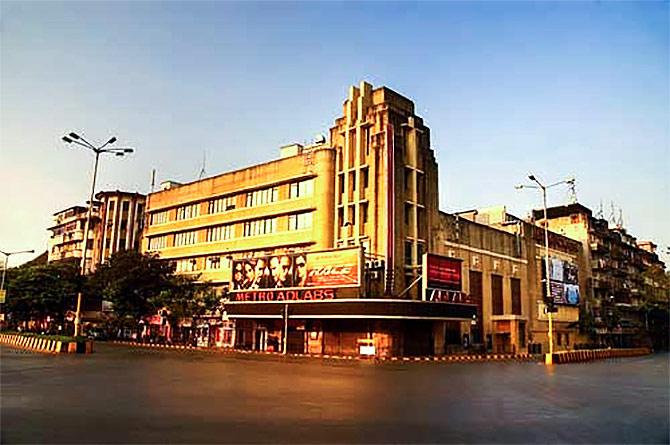
Mukta A2, the cinema chain owned by Subhash Ghai's production house, has been running New Excelsior in CST on a lease since 2017 and treats it as a flagship location even if it is a single screen.
The original metal balustrades and a gold stained-glass mural from Egypt were retained but the snack bar was upgraded into a cafe.
The light panels running across the walls and ceiling are shaped like Art Deco bands.
"It's a heritage property. We don't want to give people the feeling of walking into a cookie-cutter multiplex," says Rahul Puri, managing director, Mukta Arts.
The firm has leased other old theatres including Jai Hind, where it releases Marathi films, and Topiwala, right next to the train station in Goregaon.
Occupancy at New Excelsior is up by about 10 per cent since the partnership, says Puri.
Business is good on weekends, but Monday onwards there is a drop, notes R V Vidhani, one of the owners of New Excelsior.
Carnival Cinemas similarly partnered with two old cinemas, Matterden (known earlier as Deepak Talkies) and Liberty.
The vintage letter-board display at the latter now bears the names and showtimes of new films.
Single screens cannot show more than one or two films in a day, but have allowed chains to grow their presence from mainly smaller towns into enviable locations in major cities.
However, this model is not uniformly viable. Rents in south Mumbai can be prohibitive, observes Puri, while P V Sunil, CEO, Carnival Cinemas, says that some good properties have to be passed up because they are not all blessed with space for parking.
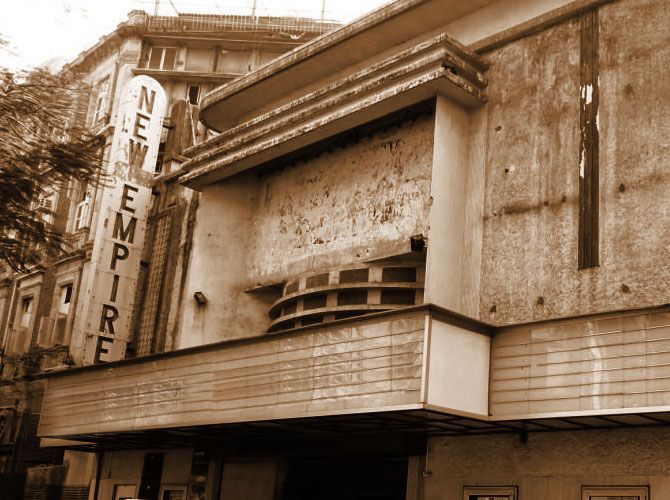
A number of old cinemas are excellent examples of Art Deco and feature in several city walking tours.
Atul Kumar of Art Deco Mumbai, a group that studies these structures, points to their architectural merits both inside and outside.
He is a fan of the grand and imposing facade of Eros Cinema, which is "somewhat like a layered cake", and of the interiors of Liberty Cinema, "an ode to the frozen fountain" that is a powerful and stunning decorative motif.
The Deco cinemas are cultural milestones, says Nitin Datar, former president, Cinema Owners and Exhibitors Association of India, but owners have been paying out of their own pockets to prolong their life despite hardly any income and even losses every year.
"Why should a cinema owner be forced to preserve such cinemas without government help?"
Single screens will always be preferred by luddites and cinema romantics.
To watch the first shows of their films, some stars still like to go to Chandan or Aurora.
They have 'holes in the screen, poor projection and sound but immense joy,' actor Ranveer Singh said in a recent television interview.
Many hope for full-fledged renewal as happened with the Royal Opera House, which now hosts cultural events every week.
"If we keep losing such institutions, we will soon become a city and culture of short-term memory," worries MAMI's Kiran. "Nothing to remind us of the years gone by and eventually with nothing to remember."




